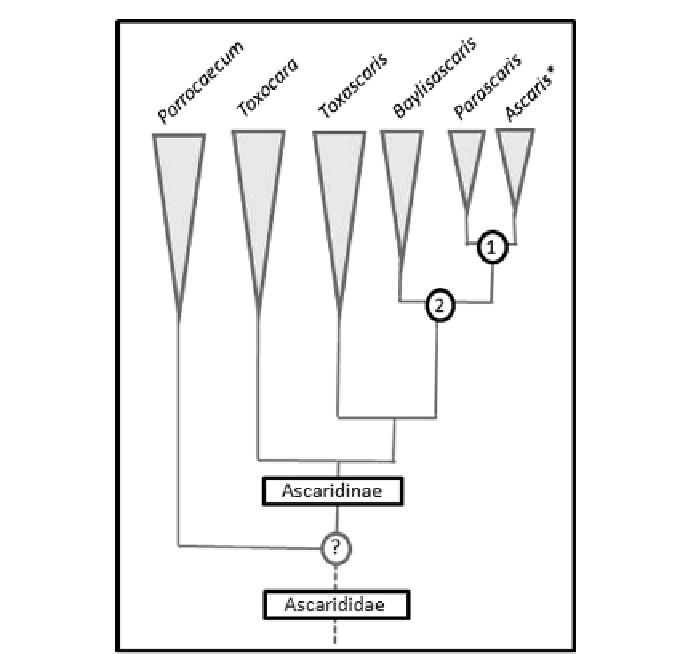Biology Reference
In-Depth Information
FIGURE 10.1
Schematic representation of phylogenetic trees based upon Li et al.,
6
Nadler and Hudspeth,
4
and Zhu et al.
7
The Ascaris genus is indicated with an asterisk.
More cryptic genera such as Lagochilascaris are omitted as presently there is no molecular
information on these taxa. A key question is to place the nodes 1 and 2 in a precise
evolutionary time which might better reveal the ancestry and host potential of proto-Ascaris.
In addition, for some genera there has been very limited sampling of
populations within a species, resulting in failure to detect intraspecific
variation and its significance.
It is therefore unclear at present when the evolutionary split, as
depicted in nodes 1 and 2 of the schematic tree (
Figure 10.1
), took place but
this would appear to impact upon the parasitic host range of these
worms,
9
which might have some bearing on the human
pig epidemi-
ology debate (see below). It is notable that only Ascaris can complete its
direct life-cycle in full within humans and non-human primates whereas
for worms of other genera, humans are paratenic hosts. For example,
the definitive hosts for B. procyonis are racoons, which become infected
through direct ingestion of eggs in the environment (in the case of
e

